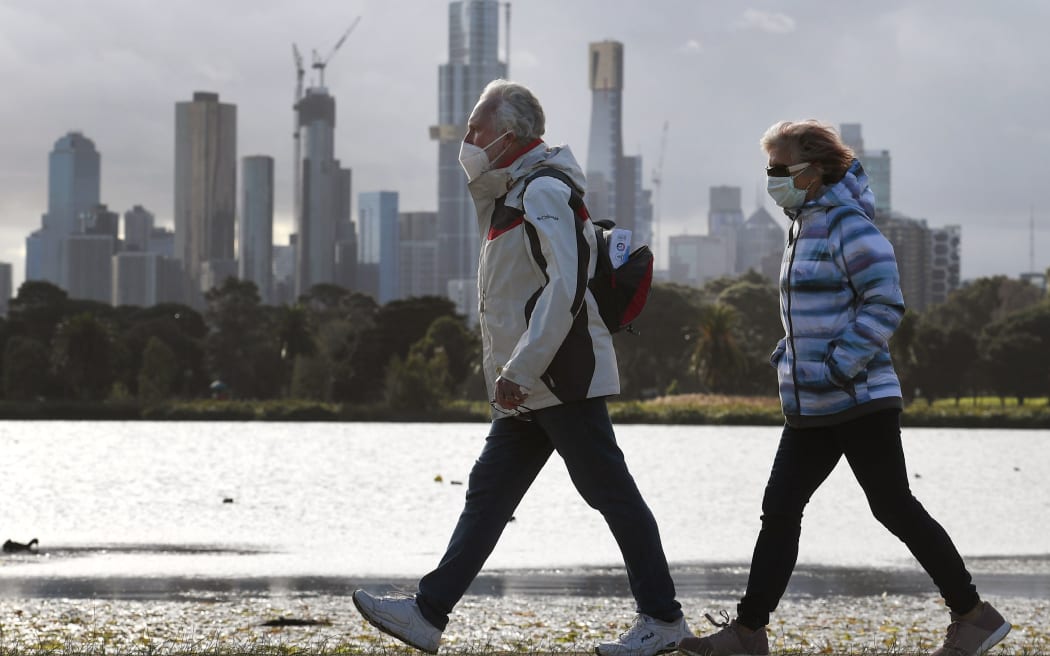A top Australian epidemiologist is calling for purpose-built managed isolation facilities to replace hotels for managing Covid-19.
Mary-Louise McLaws is a member of the WHO and worked with China on its response to SARS.
She told Kathryn Ryan that hotel quarantine breaches have sparked the majority of cases in Victoria, which recorded 400 news cases today.

Photo: AFP
“You have staff that have not been trained in infection control, we know even with highly skilled nurses and doctors that they can inadvertently infect themselves by a small breach in infection control.
“Now you have in a hotel, security staff, hospitality staff that know how to keep themselves clean … wash their hands maybe wear a mask. But they don’t really understand the importance of never having a breach because it can cause a catastrophe.”
Hotels are unsuitable for those in quarantine too, she says as they are in a room and often unable to get air flow.
“We know in hospitals that we require a certain number of air changes per hour known as litres per patient per second.
"We also have filters to filter out the virus before they open up a door, and of course in a hospital they add an extra layer of infection control by having what’s called a negative air pressure room so that the air doesn’t rush out into the corridor.”
Someone in a hotel room who is infected will be building up the viral load in that room, she says.
“If you’ve got somebody stuck in a room, maybe highly infectious, and the viral load goes up as the symptoms go up, that air is laden with virus and if the door opens up and somebody’s not wearing a mask then they can be infected.
“So really, the correct place for them is a purpose-built facility where if somebody does become infected they’re moved to another wing.”
Keeping infected and non-infected people apart is too difficult in a hotel, McLaws says.
“In a hospital the best practice is not to have a patient with a non-patient in an adjacent room, so you don’t have a negative and positive patient on the one ward, you just don’t do that.”
An infected patient would also have dedicated staff.
“So, the best and the most cost-effective solution in the long run is a purpose-built facility, which you can then use outside of a pandemic.”
Elimination of Covid-19 is a worthy goal, but Australia’s situation makes it very difficult for authorities to achieve, she says.
“New South Wales was getting single digit cases for a really long time and then all of a sudden they got a visitor from Victoria before the borders closed and one visitor has been found to have caused 16 cases, just one visitor alone.
“Then of course these cases from that visitor go to many different locations and then it’s very difficult for the authorities to track them down before that third day starts.”
Tracking exposed people before day three is critical, she says.
“About day three or four you can start to become infectious two days before you start to get symptoms.
“So, you may start getting symptoms on day five, but you may be infectious two days before that.”
Once the numbers build, keeping on top of outbreaks becomes very difficult.
“If you keep the numbers down low, as you have in New Zealand, then you can potentially find them very easily.
“But once you start getting a cumulative number over 14 days of up to 100 then your human resources will find it very difficult to find everybody.”
If numbers climb to between 60 and 100 in a 14-day period that is an orange alert, McLaws says
“Because all of a sudden it will ramp up because of the exponential, so if you can keep it down to single digits even over a 14-day period you’re still doing OK.”
And tracing apps are not a panacea, she says.
“They all have problems and the biggest problem is the human being, so even if it’s an app or a wearable, if you don’t recognise you’ve got symptoms, or you’re feeling a bit unwell, or if you don’t listen to the authorities who say a particular venue was a problem, you’re not going to go and get tested until you have potentially spread it anyway.”
The message is if you feel unwell get tested and then stay at home, she says.

